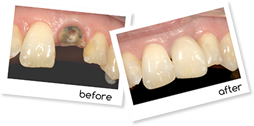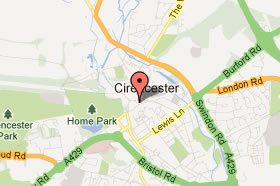What are Dental Implants?
Missing teeth can often be replaced by Implants which act like roots of teeth. After they have been fitted and have healed in place, Dentures, Bridges or Crowns may be attached to them. When Dentures are held in place by Implants they do not slip around. If Crowns or Bridges are fitted on Implants, they act like normal teeth.
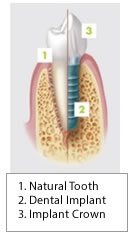 There are various types of Implants, however the most commonly placed throughout the world are often described as root-form or endosseous Implants. These generally have a cylindrical form and may be threaded like a screw on the outer surface to assist placement.
There are various types of Implants, however the most commonly placed throughout the world are often described as root-form or endosseous Implants. These generally have a cylindrical form and may be threaded like a screw on the outer surface to assist placement.
The success and rapid growth in popularity of the root-form Implant is largely due to its predictable behaviour when trying to achieve a rigid fixation with the surrounding bone and the maintenance of this state throughout many years of function.
The Implant itself is a small titanium screw which is placed in the jawbone to replace a lost tooth root artificially. Due to the unique bio-compatible nature of titanium, this screw then fuses naturally with the jawbone which is why Implants are considered to be a permanent solution if looked after properly.
Once this fusing process (osseointegration) has occurred, then connector ‘posts’ ( or ‘abutments’) can be connected to the Implants emerging from the gum to support fixed Crowns, Bridges or Dentures depending on how many teeth are being replaced.
Dental Implant Solutions
The solution is very versatile which allows us to replace single teeth, multiple teeth, through to complete mouth restorations where the patient may have no remaining teeth of their own at all. Implants can be used to restore missing teeth from any age once the jawbones have stopped growing.
Dental Implants are an ideal option for people in good general oral health who have lost a tooth or teeth due to decay, gum (periodontal) disease, an injury or some other reason. Implants can only be placed if there is enough bone present in the jaw: When teeth are lost, the bone around the teeth gradually disappears, however if too much bone has been lost it is sometimes possible to grow bone in its place.
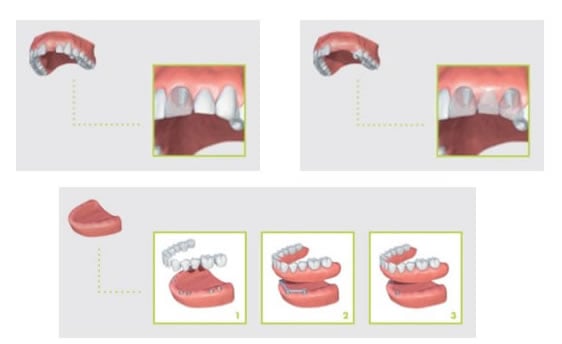

Once treatment is complete, your smile and confidence should be restored with teeth that look, feel and function completely naturally.
Ross Cutts
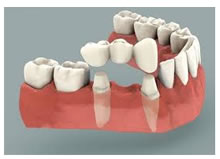
The alternative to a Single Implant is a tooth-supported Bridge where the healthy adjacent teeth are ground down unnecessarily
Advantages of Implants
The advantages of Implants over traditional, removable Dentures and Bridges include:
- The feel, function and look of natural teeth
- Freedom to eat whatever you want
- Improved confidence that comes from being able to speak, eat, kiss and smile normally again
- A more youthful appearance
- No need to grind down healthy adjacent teeth to seat a traditional bridge
- Prevention of further jawbone loss
- Preservation of existing healthy teeth
- For Denture wearers, Static Denture(s) which no longer move around.
Given the huge benefits to day-to-day lifestyle and confidence, most patients consider having a fixed Implant solution a worthwhile investment.





